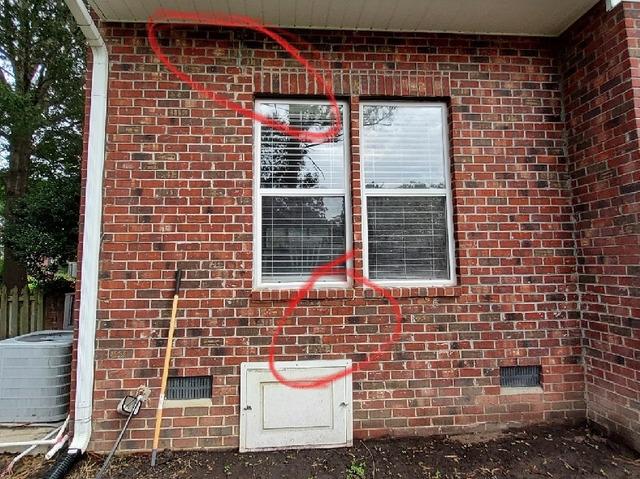
Exterior Foundation Wall Cracking
In the two areas circled in red, there were stairstep cracks appearing indicating foundation settlement of the corner of the home.
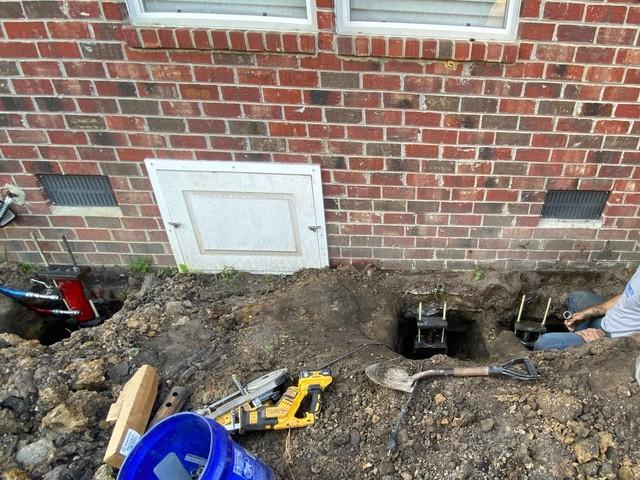
Helical Piers Installed
Helical piers were installed to support the foundation wall.
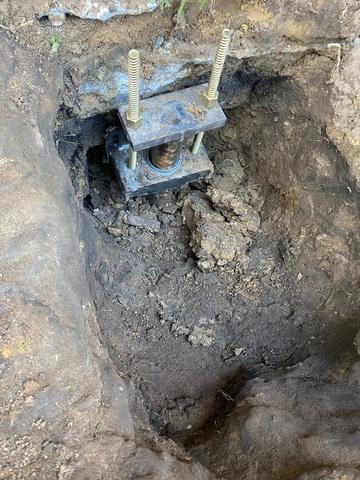
Close View of Installed Pier
Here is a close view of an installed helical pier supporting the foundation of the home.
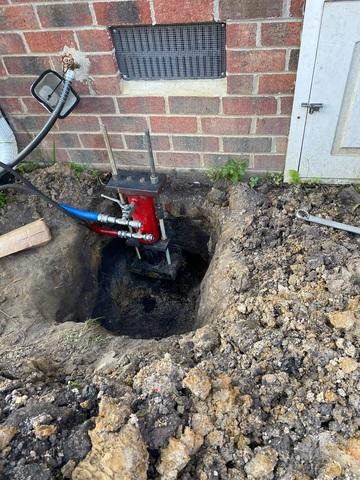
Hydraulic Lift
Here is what a hydraulic lift cylinder looks like that was used to attempt to lift the settled area into a more level position.
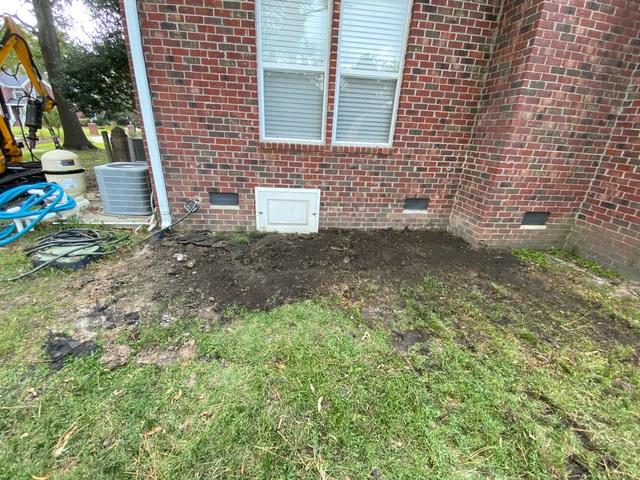
After Helical Piers Installed
The holes were backfilled after installing the piers for a final result.
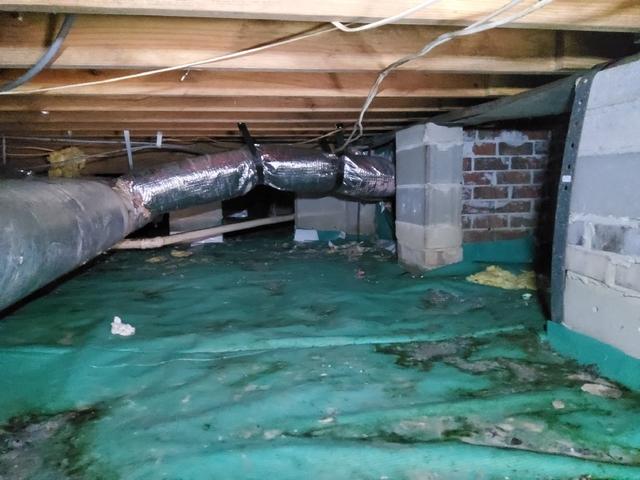
Wet Nasty Crawl Space
This crawl space had a thin unsealed plastic vapor barrier that was unable to properly reduce the moisture level in the crawl space.
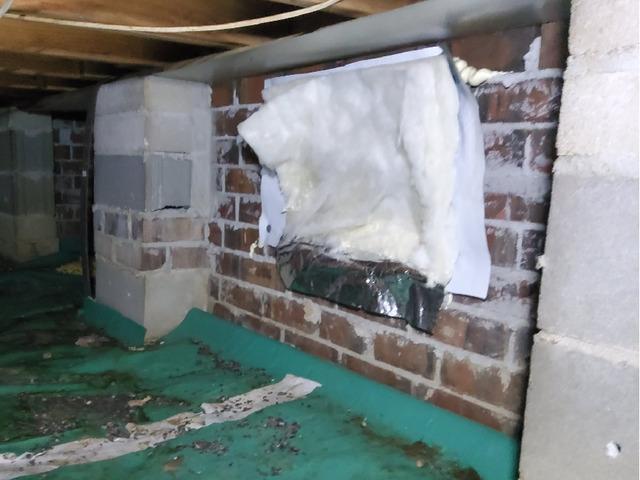
Partial Sealing Not Sufficient
The crawl space was partially sealed from the outside air with pieces of vapor barrier and insulation, but this was not sufficient. A true vapor barrier covers the ground and goes up the walls & piers.
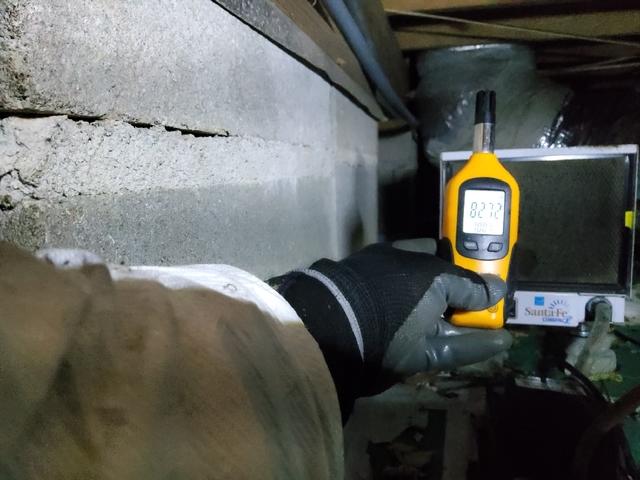
Over 80% Humidity
The crawl space had a high humidity level of about 82%. Mold and wood rot are harming the home over time at these levels.
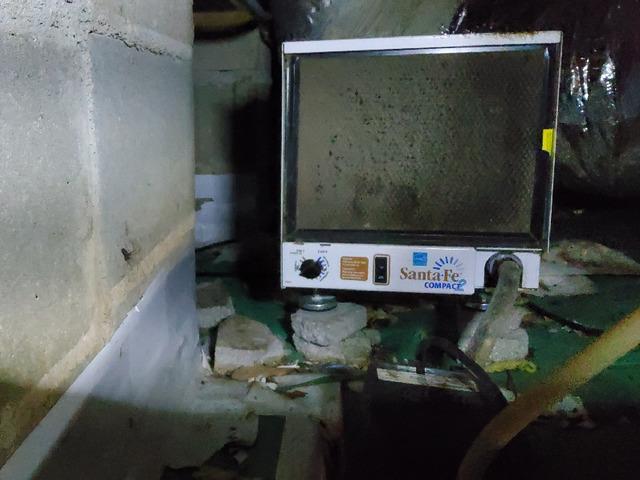
Clogged Dehumidifier
Although there was an existing dehumidifier in the crawl space, the filter was clogged and running 100% of the time, wasting money on energy costs. The water pulled out of the air was draining into the crawl space, so as the water collected it increased the humidity level until it overwhelmed the dehumidifier rather than reducing it.
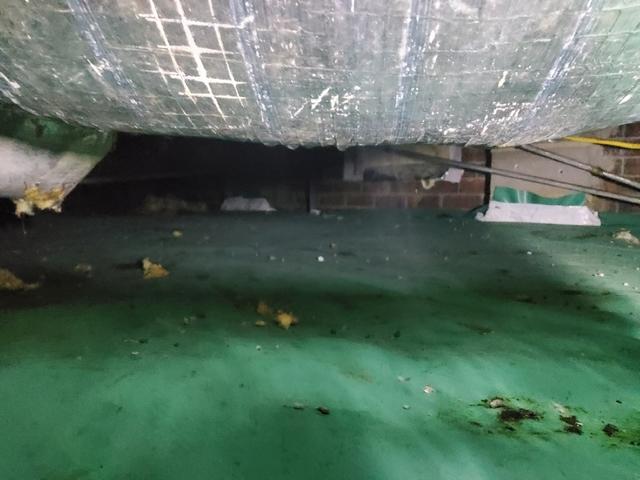
Humidity Condensating on Ducts
As warm humid air moves into the crawl space, the cold AC ducts reduce the temperature of that air, causing the humidity to stick to the ducts and drip down on top of the vapor barrier, trapping water inside the crawl space.
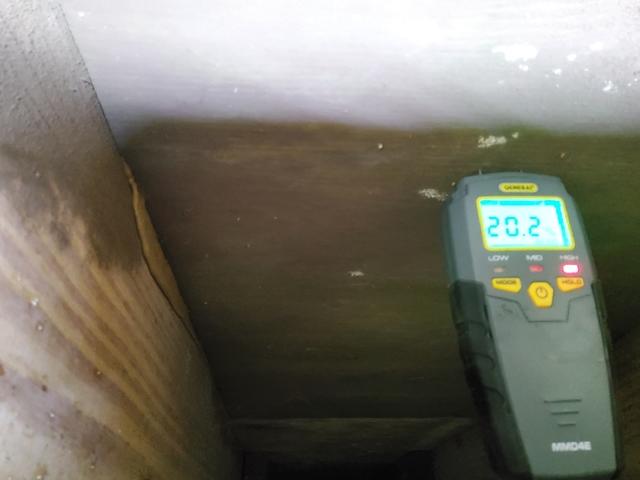
High Subfloor Moisture
Our inspector measured the wood moisture level and found that the readings were high at about 20%. Acceptable wood moisture should be closer to half of what was measured here.

Moldy Subfloor and Joists
Due to the high moisture in the crawl space, mold was growing on the subfloor and joists. Encapsulating the crawl space effectively to control the moisture level will cause the mold to go dormant, essentially becoming harmless.
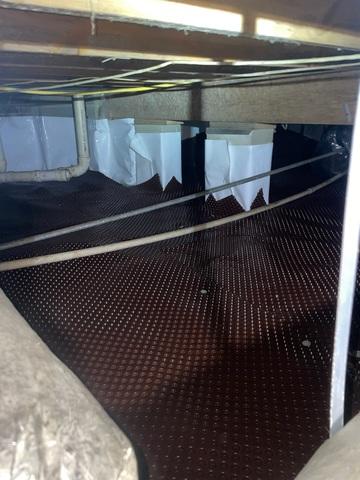
Drainage Matting Installed
A layer of drainage matting is installed first to aid water that seeps into the crawl space to drain to a sump pump.
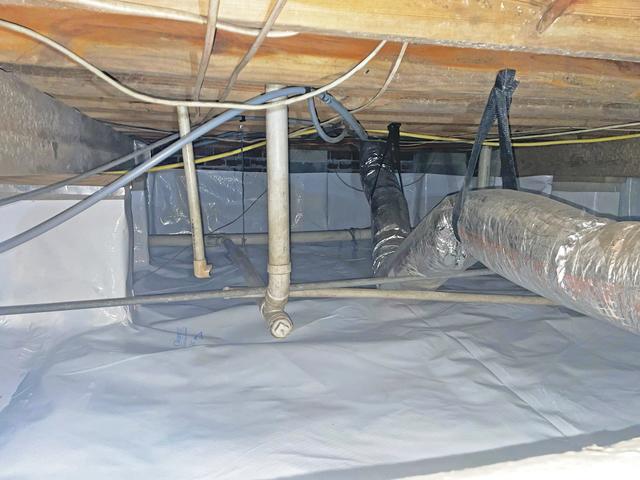
Encapsulation Installed
The crawl space was effectively sealed with a CleanSpace Encapsulation System to control the moisture level.
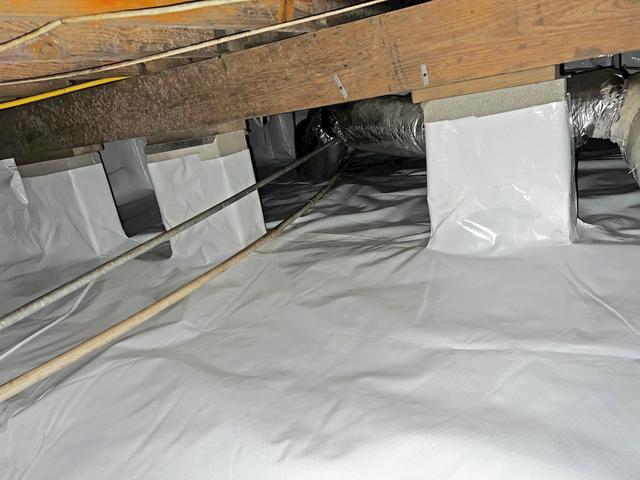
Sealed Up the Piers
Sealing the vapor barrier up the piers helps keep out moisture that comes up through the ground.
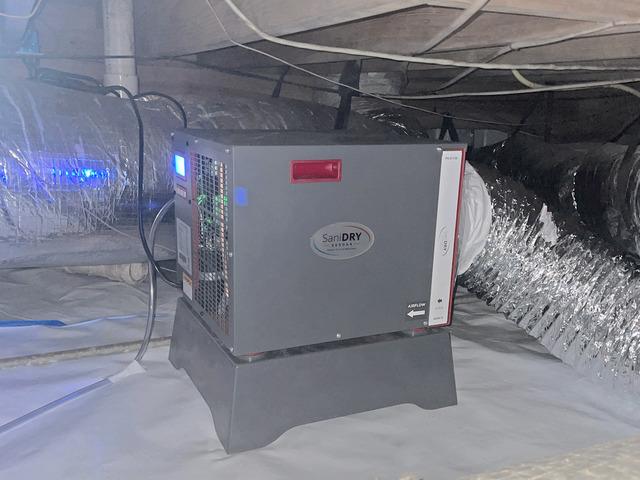
SaniDry Sedona Dehumidifier
A SaniDry Sedona Dehumidifier was installed to effectively monitor and control the humidity level in the crawl space.
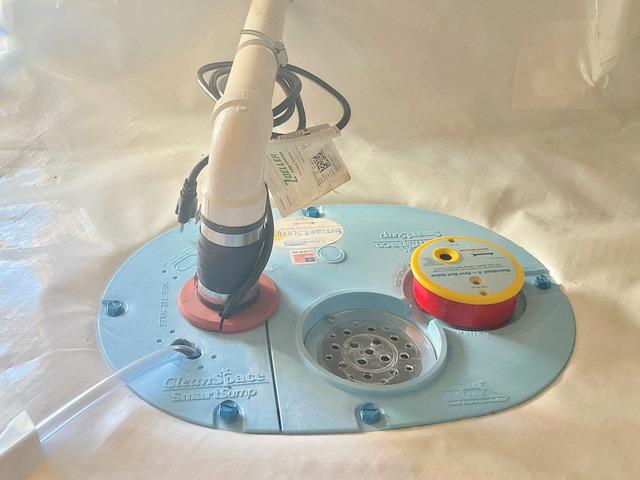
SmartSump Installed
In order to remove water from the crawl space that seeps in under the liner or is pulled out of the air from the dehumidifier, a sump pump is installed to remove the water, pushing it out and away from the home through a discharge line.
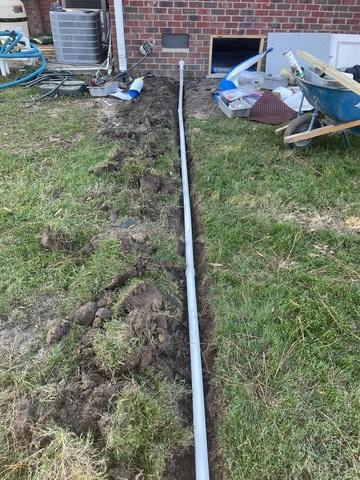
Sump Pump Discharge Line
The sump pump discharge line runs out of the crawl space through the wall and extends away from the home underground until the discharge point.
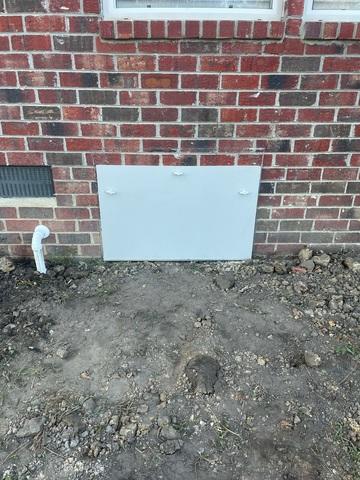
Sealed Crawl Space Door
An Everlast crawl space door was installed to keep moisture from coming in this way.
